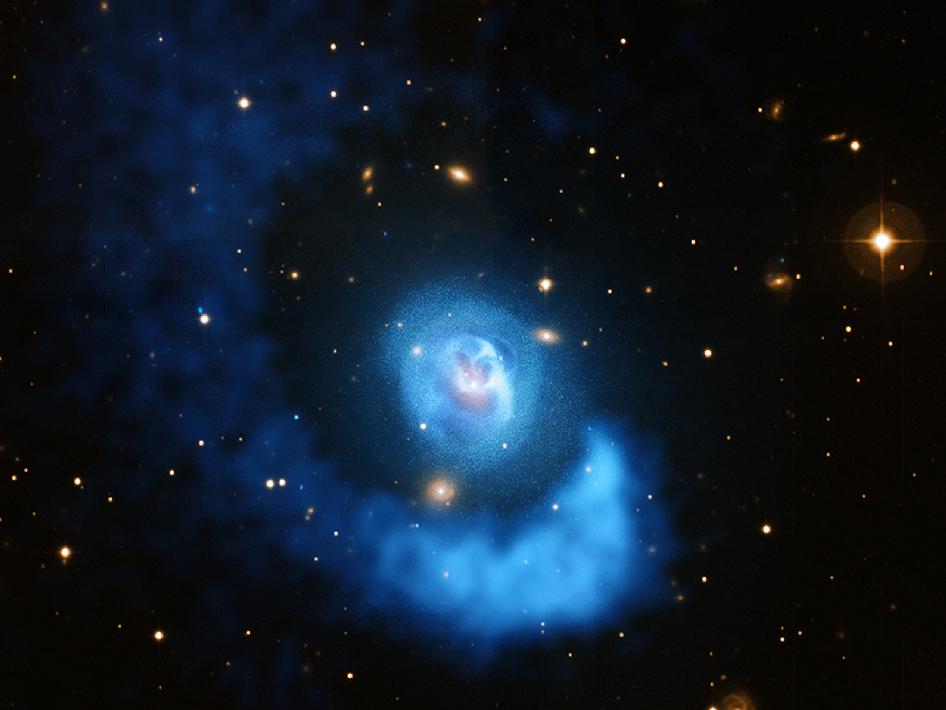A Galaxy Cluster Gets Sloshed
Like wine in a glass, vast clouds of hot gas are sloshing back and forth
in Abell 2052, a galaxy cluster located about 480 million light years
from Earth. X-ray data (blue) from NASA's Chandra X-ray Observatory
shows the hot gas in this dynamic system, and optical data (gold) from
the Very Large Telescope shows the galaxies. The hot, X-ray bright gas
has an average temperature of about 30 million degrees.
A huge spiral structure in the hot gas -- spanning almost a million light years -- is seen around the outside of the image, surrounding a giant elliptical galaxy at the center. This spiral was created when a small cluster of galaxies smashed into a larger one that surrounds the central elliptical galaxy.
The smaller cluster passed the cluster core, the direction of motion of the cluster gas reversed and it traveled back towards the cluster center. The cluster gas moved through the center again and "sloshed" back and forth, similar to wine sloshing in a glass that was jerked sideways. The sloshing gas ended up in a spiral pattern because the collision between the two clusters was off-center.
The Chandra data show clear bubbles evacuated by material blasted away from the black hole, which are surrounded by dense, bright, cool rims. As with the sloshing, this activity helps prevent cooling of the gas in the cluster's core, setting limits on the growth of the giant elliptical galaxy and its supermassive black hole.
A huge spiral structure in the hot gas -- spanning almost a million light years -- is seen around the outside of the image, surrounding a giant elliptical galaxy at the center. This spiral was created when a small cluster of galaxies smashed into a larger one that surrounds the central elliptical galaxy.
The smaller cluster passed the cluster core, the direction of motion of the cluster gas reversed and it traveled back towards the cluster center. The cluster gas moved through the center again and "sloshed" back and forth, similar to wine sloshing in a glass that was jerked sideways. The sloshing gas ended up in a spiral pattern because the collision between the two clusters was off-center.
The Chandra data show clear bubbles evacuated by material blasted away from the black hole, which are surrounded by dense, bright, cool rims. As with the sloshing, this activity helps prevent cooling of the gas in the cluster's core, setting limits on the growth of the giant elliptical galaxy and its supermassive black hole.


टिप्पणियाँ
एक टिप्पणी भेजें